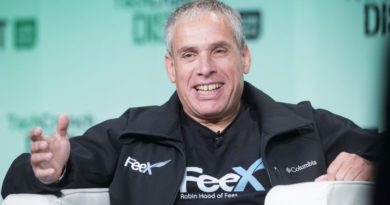Stocks are soaring as Wall Street celebrates a cooler-than-expected inflation report that could signal the end of the Fed's rate hikes: ‘The immaculate disinflation continues’
Stocks soared Tuesday after subdued inflation data gave investors hope that the post-COVID era of soaring prices may be almost over. Consumers and businesses have struggled to cope with high inflation and the Federal Reserve’s now 20-month-long interest rate hiking campaign meant to tame it, but this new data may signal we’re nearing the end of the pain.
Inflation, as measured by the consumer price index, rose just 3.2% from a year ago in October, the Bureau of Labor Statistics reported Tuesday. That’s just a hair shy of Wall Street’s consensus expectations for 3.3%, but down sharply from September’s 3.7%.
Core inflation, which excludes more volatile food and energy prices, also came in just below the consensus forecast of 4.1%, rising 4% from a year ago. That’s down from 4.1% in September.
Wall Street was quick to celebrate the good news on Tuesday. “The immaculate disinflation continues,” said Ronald Temple, chief market strategist at Lazard, an asset management and financial advisory firm that manages $194 billion. And stocks responded in kind as well. The S&P 500 soared more than 1.7% to over 4,500 by midday. The tech-heavy Nasdaq followed in its footsteps, rising 2% to over 14,000.
Treasury yields also plunged on the prospect that the October inflation report signals the end of the Fed’s rate hiking campaign. The 10-year Treasury yield, for example, fell below 4.5% for the first time since September.
Temple said he believes that the current drop in inflation is apt to continue as well. He noted that core CPI inflation has risen at just a 2.8% annualized rate over the last five months due to falling goods prices and slowing housing and rent inflation.
That’s great news for the Fed, which has been hoping to slow the economy and reduce inflation to its 2% target with interest rate hikes. “Absent any exogenous shocks, the Fed is increasingly likely to be in a position to cut rates in the second quarter of 2024,” Temple argued.
The last gasp of inflation?
Temple was far from the only one celebrating the latest inflation report. There seems to be a growing consensus on Wall Street that the last gasp of inflation is either here already or on its way.
Jefferies’ senior economist Thomas Simons, noted that the story of fading inflation is “consistent throughout the details” of the CPI report. From fading new and used car prices, even amid the United Auto Workers’ strike, to cooling shelter and medical care services inflation, most major categories showed signs of a lasting slowdown in pricing.
“For a change, there’s no secret here with the data. A handful of different components remain extremely firm, but most showed signs of softening in October,” Simons wrote in a note to clients Tuesday, adding that “this should be a comforting sign for the Fed, and it should eliminate any expectation that they will raise rates again in December or thereafter.”
Lawrence Yun, NAR chief economist, noted that mortgage rates, which had risen as high as 8% this month, are “plunging with the news of inflation calming” as well. And that calming should persist, he says, noting that overall inflation has fallen sharply despite the Fed’s use of old data when calculating shelter inflation rates.
Shelter costs were the largest factor in the rise of inflation in October, according to BLS, rising 0.3% during the month, and 6.7% from a year ago. However, using non-official, but more recent and relevant private sector rent data to calculate shelter costs, Yun found that overall inflation is already below the Fed’s desired 2% target rate.
“The interest rate rises should be over, and the Fed will have to consider cutting interest rates seriously,” he said, arguing that mortgage rates will fall to 7% in a few months and into the 6% range by next spring.
Yun’s bullish view of the latest inflation report was also shared by Jay Hatfield, CEO at Infrastructure Capital Management, who has long argued that the Fed doesn’t calculate shelter inflation correctly. Similar to Yun, Hatfield’s proprietary core inflation data that uses more up-to-date shelter data, which he calls CPI-R, is now at approximately 2% compared to the BLS estimate of 4% core inflation.
Beyond shelter inflation, Hatfield also noted that consumers should continue to benefit from falling gasoline prices in the coming months as they “bleed through” to core consumer price categories. Gasoline prices fell 5% in October, but they’ve continued to drop this month, hitting just $3.35 a gallon Tuesday, and that should be reflected in November’s CPI data.
Or just the start of a ‘difficult last mile’?
The bullishness over the latest inflation report on Wall Street is all well and good, but will it be enough to convince Fed officials that they can declare victory in their fight for price stability?
Just last month at an event at the Economic Club of New York, Powell certainly didn’t sound convinced about the argument that inflation was under control: “A few months of good data are only the beginning of what it will take,” he said.
Quincy Krosby, chief global strategist for LPL Financial, also warned that “so-called ‘last mile’ in the Fed’s campaign to quell inflation still remains sticky.” There’s still a lot of work to do to get inflation from the current 3.2% down to the Fed’s 2% target, according to Krosby. She noted consumers’ inflation expectations remain elevated, which historically has led to persistent price increases unless the Fed continues to raise interest rates.
As George Ball, chairman of Sander Morris Harris, told Fortune last year: “Fighting inflation is like killing a snake. First, you have to kill the snake, then you have to cut the head off the snake and show it to everybody in the community so that they know the snake is dead.”
For Krosby, the snake may be dying(inflation), but the community still doesn’t believe it’s dead—as evidenced by inflation expectations. That’s why consumers’ inflation “expectations need to be firmly anchored before the Fed can be assured that their job is completed successfully,” according to Krosby.
Still, Gregory Daco, EY’s chief economist, argued that consumer demand for goods is slowing, wage growth is easing, and rents are falling in an “ideal disinflationary combo” headed into 2024, barring a serious crisis in the Middle East.
“Ain’t no reason to believe the last inflation mile will be the most difficult,” he said, arguing inflation will continue to slow throughout the next year.




